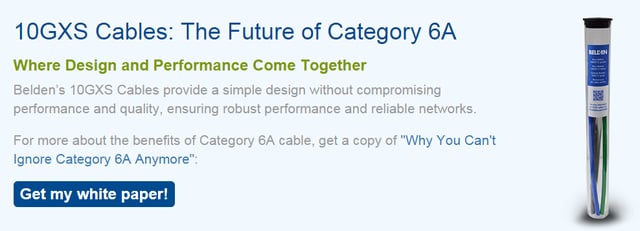
No matter what type of facilities you service, regardless if it's hospitals or schools, the bandwidth required for new applications to run properly calls for speeds that are pushing what current Category 5e networks can handle. Category 5e cabling now accounts for less than one-quarter of cable shipments – and there are multiple reasons why. So what can you do with the cabling network you've relied on for years can no longer keep up with the increasing number of wireless devices, the transfer of high-resolution images, streaming high-definition video, multimedia graphics and surveillance footage?
It's hard to justify making an investment in cabling that will soon be reaching the end of it's lifecycle. With the ability to handle 1000 Mbps speeds (Gigabit Ethernet) at 100 MHz, Category 5e cabling will require an upgrade in the next few years in order to support the applications and emerging technologies that most enterprises will be using by then.
Get the Latest White Paper on the Future of Cable
Next-generation Wave 2 WiFi devices will transmit at data rates greater than 1 Gbps, possibly reaching up to 7 Gbps. Consequently, higher-speed Ethernet links will need to be deployed to connect these WAPs. If you plan to deploy next-generation WiFi in the next few years – as most business will do – the best (and possibly only) viable solution to support it is Cat 6 cable. Overall, either to access points or to workstations, average speeds are getting faster – links faster than 1G will be required, such as 2.5G, 5G and 10G. Category 5e is unable to handle 10 Gbps speeds up to the required 100-meter distance.
To learn more about creating a futureproof network with Belden solutions that can handle more people, devices and systems, please contact your local Accu-Tech representative..



.png?width=58&height=58&name=X_logo_2023_(white).png)
